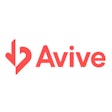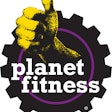Source: Prescription for Activity Task Force
- Roadmap identifies steps to get 50 percent of Americans in all demographics to recommended levels of physical activity by 2035, sparked by concerted action in healthcare and the communities it serves
- Prescription for Activity Task Force, which authored the plan, turns its focus to implementation
San Diego, November, 2017— The Prescription for Activity Task Force had a question: How can the healthcare sector be mobilized to work in greater concert with communities across the U.S. to increase physical-activity levels—with a focus on those populations at greatest need?
Today, the Task Force releases its answer: a systems-change map that charts a course to a U.S. culture transformed to prioritize and celebrate physical activity and thus reduce the prevalence of inactivity-related diseases. Published by a volunteer team of more than 60 national experts in healthcare, academia, business, nonprofit, government and more, the comprehensive plan maps how to get 50 percent of Americans to recommended levels of physical activity by 2035. The desired outcome will be achieved through the pursuit and achievement of a series of necessary incremental outcomes over the next 18 years in key subsectors of healthcare and in the communities where care is delivered.
“The Prescription for Activity systems-change map represents a fundamental rethink of investment in health by healthcare and will result in high collaboration between the clinical care and community,” said Eduardo Sanchez, MD, MPH, FAAFP, Chief Medical Officer for Prevention and Chief of the Center for Health Metrics and Evaluation for the American Heart Association, which officially endorsed the white paper. “By using the Theory of Change approach to strategic planning, the Task Force was able to start with what’s possible – 50 percent or more of all Americans across all demographics achieving recommended physical-activity levels -- rather than be constrained by the limitations of the binding present. As a result, we now have a blueprint for how healthcare and its various systems and the communities that surround healthcare work in concert to measurably increase physical activity among all individuals and the adoption of healthier lifestyles across the full diversity of the U.S. population.”
The Prescription for Activity Task Force’s plan features three core paths to achieve its goal:
- Care delivery: Assessing, prescribing, and tracking physical activity as a path to enhanced patient outcomes
- Community: Recruiting communities to make physical activity a priority and a source of fun, enjoyment and socialization
- Clinic-Community Integration: Building a bridge of trust and collaboration between healthcare providers and community resources to encourage physical activity
If the outcomes that constitute these paths are achieved as the Task Force recommends, healthcare providers would routinely assess physical-activity levels, encourage physical activity among their patients, counsel on its necessity and then refer patients to community partners to help them become physically active. Trusted by clinicians and healthcare consumers, the community programs would provide effective, affordable and community-based and science-based physical activity. The health and fitness providers would track and assess how their clients did with their goals and adjust care plans accordingly.
“What’s so compelling about what the Prescription for Activity Task Force has created is that it’s implementable,” said Jenny Bogard, Director of Healthcare Strategies at Alliance for a Healthier Generation, which officially endorsed the white paper. “The Task Force isn’t just presenting recommendations. It is presenting what amounts to a highly invitational, inclusive, and fairly detailed plan of attack for bringing communities and healthcare into alignment in the name of evolving U.S. culture to one that puts physical activity first. It’s that goal that animated the task force’s work, so much so that the Task Force now turns its attention to sustained, orchestrated implementation.”
With today’s release of the plan, the Prescription for Activity Task Force turns its focus toward implementation. The first steps of implementation mandate recruitment of critical healthcare stakeholders at the local, state and national levels to build nationwide initiatives and national, state and local pilot programs. Simultaneously, the Task Force has assembled a leadership council to coordinate, communicate, facilitate, measure and evaluate the work specified in the report through 2035.
“When the American Council on Exercise humbly convened the Task Force more than two years ago, we could not have imagined the power of the work that would unfold,” says American Council on Exercise Chief Science Officer Cedric X. Bryant, Ph.D., who facilitated the Task Force. “Within the Task Force was the palpable sense that healthcare has almost limitless capacity to influence the adoption of physically active lifestyles and facilitate a new understanding of the degree to which regular physical activity can enrich lives. What the Task Force presents today is a systems-change map for exactly how to unlock healthcare’s full potential to spark that transformation in understanding, culture, and ultimately measurable health outcomes in communities and populations across the country.”
Physical activity, which encompasses all activities that require bodily movement, such as play, work and exercise, is associated with improved quality of life and a reduced risk of developing chronic disease. However, only one in four adults globally is considered sufficiently physically active, with physical inactivity identified as the fourth leading cause of death worldwide. According to the National Physical Activity Plan, the integration of physical-activity into healthcare is a promising strategy to increase physical activity across communities of all demographics, achieve improved population health and lower the cost of care. And advice from health professionals has been shown to significantly influence the adoption of healthy lifestyle behaviors, including regular physical activity, and can increase patient satisfaction with medical care.
As the Prescription for Activity Task Force unveils its report, it encourages others to join the 18-year journey and become formally involved. To learn how to become involved in the Prescription for Activity Task Force, please visit prescriptionforactivity.org.
For a five-minute video overview of the Prescription for Activity Force’s systems-change map, please click here.
To read the Prescription for Activity Task Force’s report on its plan, please click here.
To schedule an interview with Prescription for Activity Task Force participants, contact Mia Bolton at [email protected].
Prescription for Activity Task Force
The Prescription for Activity Task Force is convened to mobilize healthcare to its full potential to help more Americans achieve recommended physical-activity levels. It is comprised of more than 60 volunteer national experts, thought leaders and luminaries from healthcare, academia, business, philanthropy and government. Learn more at prescriptionforactivity.org.































